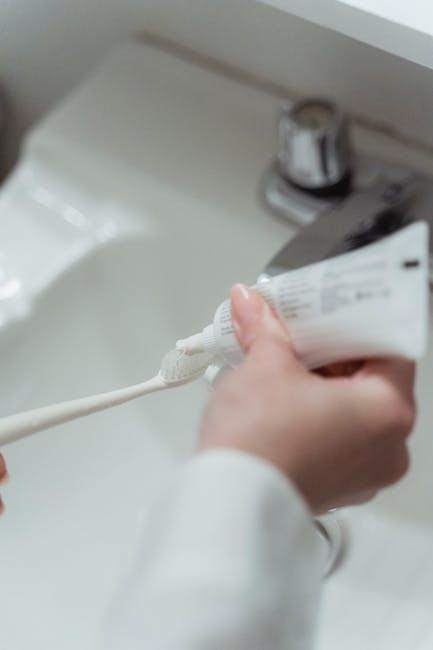
Fluoride Ban Could Create Cavities For 1 Of Every 3 U.S. Kids – U.S. News & World Report
Dental health experts and parents alike are raising concerns over the potential consequences of a fluoride ban, which could lead to a significant increase in cavities among children. According to a recent report by U.S. News & World Report, nearly one in every three U.S. kids could experience more dental decay if fluoride is removed from public water supplies. In this article, we’ll explore the vital role fluoride plays in oral health, the risks of a ban, and practical tips for protecting children’s teeth.
Why Is Fluoride Important for Children’s Dental Health?
Fluoride is a naturally occurring mineral widely known for its cavity-preventing properties. It strengthens tooth enamel, making it more resistant to decay from acids produced by bacteria in the mouth. This mineral has been added to public water supplies in many U.S. communities since the 1940s, leading to a dramatic decline in tooth decay among children and adults.
Key Benefits of Fluoride:
- Prevents cavities: Fluoride remineralizes enamel during early decay stages.
- Reduces dental treatment needs: Less decay means fewer fillings and extractions.
- Cost-effective public health measure: Water fluoridation benefits low-income families who might lack access to dental care.
- Safe in recommended doses: Approved by the CDC, ADA, and WHO.
How a Fluoride Ban Could Impact Cavity Rates Among U.S. Kids
The proposed fluoride ban in some states or municipalities is driven by misinformation about fluoride safety and environmental concerns. However, removing fluoride from water sources may unintentionally increase dental decay rates in children, particularly those in underserved communities. Research shows:
- Communities without water fluoridation have 25% more tooth decay in children.
- An estimated 33% (1 in 3) of American children could develop cavities after a ban.
- Dental health disparities would worsen among low-income and minority groups.
| Community Type | Average Cavity Rate in Children | Potential Increase Post-Fluoride Ban |
|---|---|---|
| Fluoridated Water Communities | 20% | N/A |
| Non-Fluoridated Communities | 25% | +5% |
| Potential Impact After Ban | ~33% | +13% |
Understanding the Risks: Who Is Most Vulnerable?
While fluoride benefits all populations, certain groups are at elevated risk of cavity development if fluoride is restricted:
- Children from low-income families: Limited access to regular dental care makes fluoride a critical preventive tool.
- Rural communities: Often have less access to dental professionals and dental hygiene education.
- Children with special health care needs: May face challenges maintaining oral hygiene.
- Minority populations: Face systemic barriers to oral health services.
Real-Life Perspective: A Dental Hygienist’s Experience
Jessica Morales, a dental hygienist in Ohio, shares her firsthand observations:
“Since learning about the fluoride ban proposals, I’ve noticed growing fear and confusion among parents. Many kids are now experiencing more cavities because they miss the protective effects of fluoride. For families who can’t afford frequent dental visits, fluoridated water has been a lifesaver. Without it, we’re seeing more kids with painful dental issues at earlier ages.”
Practical Tips for Protecting Children’s Teeth Without Fluoride Water
If you live in an area affected by fluoride restrictions, here are some advice and strategies to help safeguard your child’s dental health:
- Use fluoride toothpaste: Choose age-appropriate fluoride toothpaste and supervise brushing to minimize swallowing.
- Schedule regular dental checkups: Early detection and treatment reduce cavity risk.
- Limit sugary snacks and drinks: Sugars fuel decay-causing bacteria.
- Encourage proper oral hygiene habits: Brush twice daily and floss regularly.
- Consider fluoride supplements or rinses: Consult a dentist for safe usage guidelines.
Monitor Your Child’s Oral Health With This Checklist:
| Daily Practice | Recommended Frequency | Notes |
|---|---|---|
| Brushing with Fluoride Toothpaste | Twice a day | Use a pea-sized amount for children under 6 |
| Flossing | Once daily | Start when teeth touch |
| Dental Visits | Every 6 months | More often if high risk of cavities |
Common Misconceptions About Fluoride
Misinformation has driven much of the movement toward banning fluoride. Let’s debunk some common myths:
- Myth: Fluoride causes serious health problems.
Fact: Fluoride in water is safe at approved levels and extensively studied. - Myth: You get enough fluoride from toothpaste alone.
Fact: Community water fluoridation supplements fluoride intake, especially for those with limited dental care access. - Myth: Natural water contains sufficient fluoride.
Fact: Natural fluoride levels vary greatly and are often too low for cavity prevention.
Conclusion: Protecting Our Children’s Smiles Means Protecting Access to Fluoride
A potential fluoride ban represents a significant public health risk that could cause cavities for 1 of every 3 U.S. children, increasing dental disease, pain, and costly treatments. While concerns should always be investigated with scientific rigor, the current evidence overwhelmingly supports the safety and effectiveness of fluoride for preventing tooth decay.
Parents, communities, and policymakers must prioritize evidence-based decisions to ensure children maintain strong, healthy teeth. By combining fluoride use with good oral hygiene and nutrition, we can continue to reduce dental cavities and set kids up for a lifetime of healthy smiles.
Stay informed, advocate for fluoridation, and encourage regular dental care. Your child’s smile depends on it.


